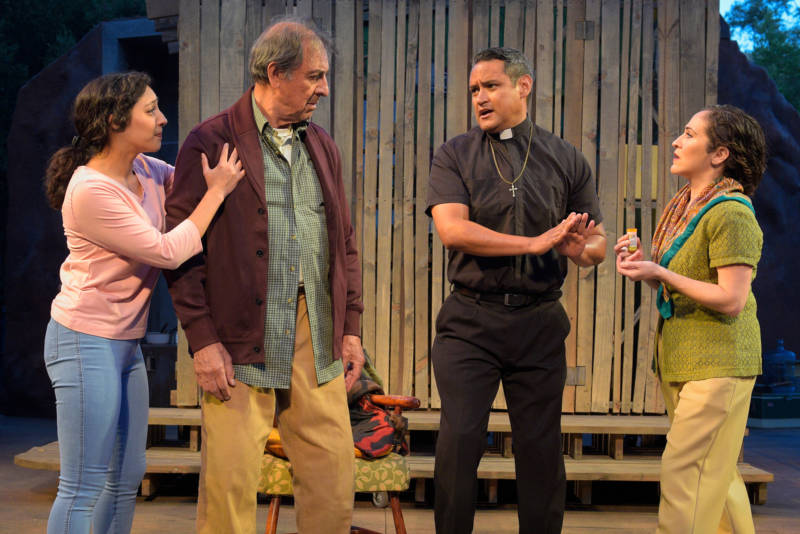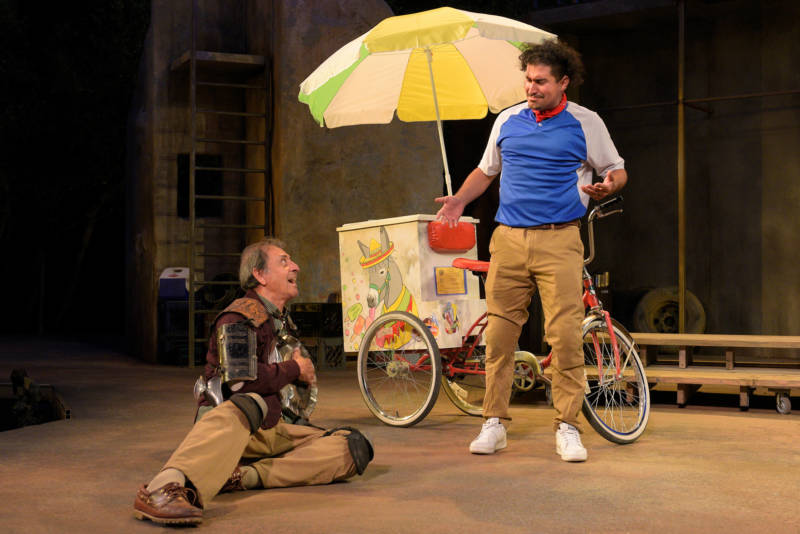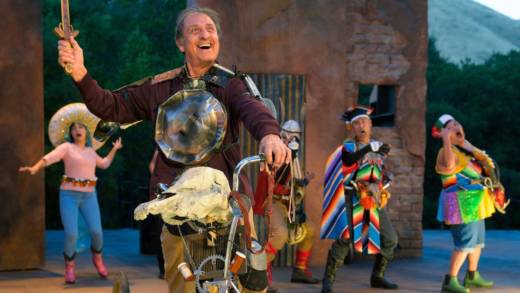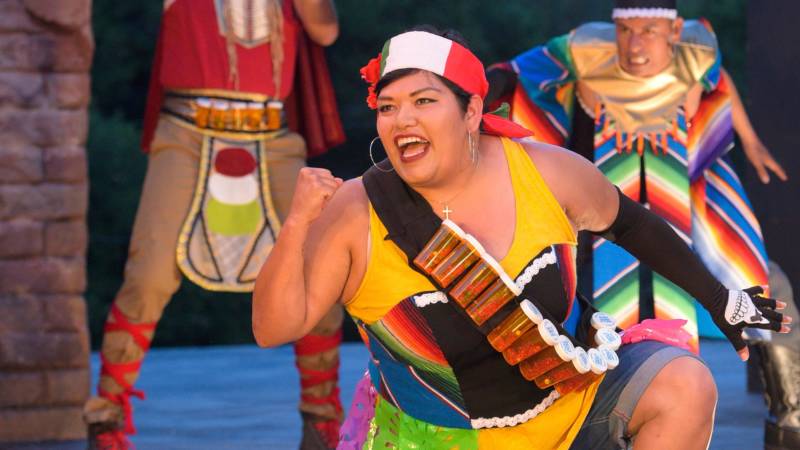Don Quixote is literature’s great character of delusion, a man we know all too well. He’s the ultimate viejo pedorro: the old man who loves to hear himself talk. In playwright Octavio Solis’s reimagining of Cervantes’s Don Quixote, Quixote Nuevo—running at Cal Shakes through July 1—the protagonist is a former literary professor living in modern-day south Texas, suffering from dementia, who believes he is Don Quixote.
The promise of Quixote Nuevo is inspiring, and the play features an all Latinx cast, Latinx director, and an award-winning playwright hoping to breathe new life into a spent story. Yet the play stumbles on its reliance of tired tropes, and instead of shining a light on the complex stories of the people who live on the margins, our characters are more like sitcom renderings of Latinidad than Iñárritu-esque portraits of maligned people.

When we meet the older Quixote (Emilio Delgado, who was revered for his role as Luis on Sesame Street), he is remembering a younger version of himself (played by Carlos Aguirre) falling in love with a migrant farmworker on his father’s ranch named Dulcinea (Sarita Ocón). As the play unfolds, we discover that as a young man, he gifted her the only remaining memento of his dead mother he had, a rosary made of bones.
Dulcinea returns to Las Cenizas, Mexico, and when she asks her love when they will meet again, Quixote is too afraid to upset his family and leave Texas to come for her. So he keeps an unsent love letter he wrote Dulcinea in his pocket: a talisman of the man he dreamed of being, and never could become.
Later, a group of migrant workers is found dead in the desert. One of the bodies is of a young woman, clutching a rosary made of bones. Is the dead woman Dulcinea, or one of the thousands of migrants whose bodies are scattered across the border? Our Quixote is never sure, but the ghost of Dulcinea haunts him, and he spends the rest of the play on a quest to find her.

Poetic moments like these are glimmers in Quixote Nuevo. There are entire scenes and actors that delight and deliver, like the role of his “squire” Sancho Panza (Juan Amador). His role is re-envisioned as a street-wise paletero, a Mexican American ice cream man who cracks jokes alongside Quixote. The two get into disastrous trouble as they thwart and attack an immigration officer and take down a border patrol blimp in their quest to avenge injustice. Watching the delusional Quixote throw his sword in the air and destroy the symbol of migrant persecution, the audience can’t help but cheer.




